Samsung adds to its litany of true wireless earbuds with the Samsung Galaxy Buds 2, a pair of active noise-cancelling (ANC) earphones that share plenty of DNA with the successful Galaxy Buds Pro. The Buds 2 are the first of Samsung’s earphones to include an ear tip fit test and use Bluetooth 5.2. Arguably the best thing about the Buds 2 is the $149.99 price, but Samsung’s more robust flagship earbuds often go on sale for just $20 more, making the Buds 2 a hard sell.
Let’s disentangle the confusing list of Samsung Galaxy Buds to see how the Buds 2 compare to their siblings. Are these earphones worth it, or do they end up lost as the middle child between the Buds Pro and Buds Plus?
What’s it like to use the Samsung Galaxy Buds 2?

The Galaxy Buds 2 retain a similar design to the Galaxy Buds Pro, with a rounded earbud shape free of silicone wing tips. Each earbud weighs just five grams. Still, stabilizing wing tips would have been a nice option for athletes who want to take advantage of the IPX2 water resistance. Why Samsung refuses to return to the better fit of the Buds Plus’ design is a mystery as the Buds Plus remain the most comfortable earphones around.
Headphone buying guide: A beginner’s guide to all things headphones
As with previous Galaxy Buds, the Buds 2 are crammed with high-tech sensors, among which is a proximity sensor for automatic ear detection. When you remove both earbuds, music playback pauses. In order to resume playback, you must tap either earbud; music doesn’t resume automatically when you re-insert the ‘buds. The touch controls are effective and intuitive but the touchpads often register accidental contact, a pervasive problem that plagues older Samsung earphones too. It didn’t take long for this to become a nuisance: I often adjusted the earbuds as they came loose from my ear canals, which sent media playback into a frenzy of song skips and pauses.
Is the charging case well built?
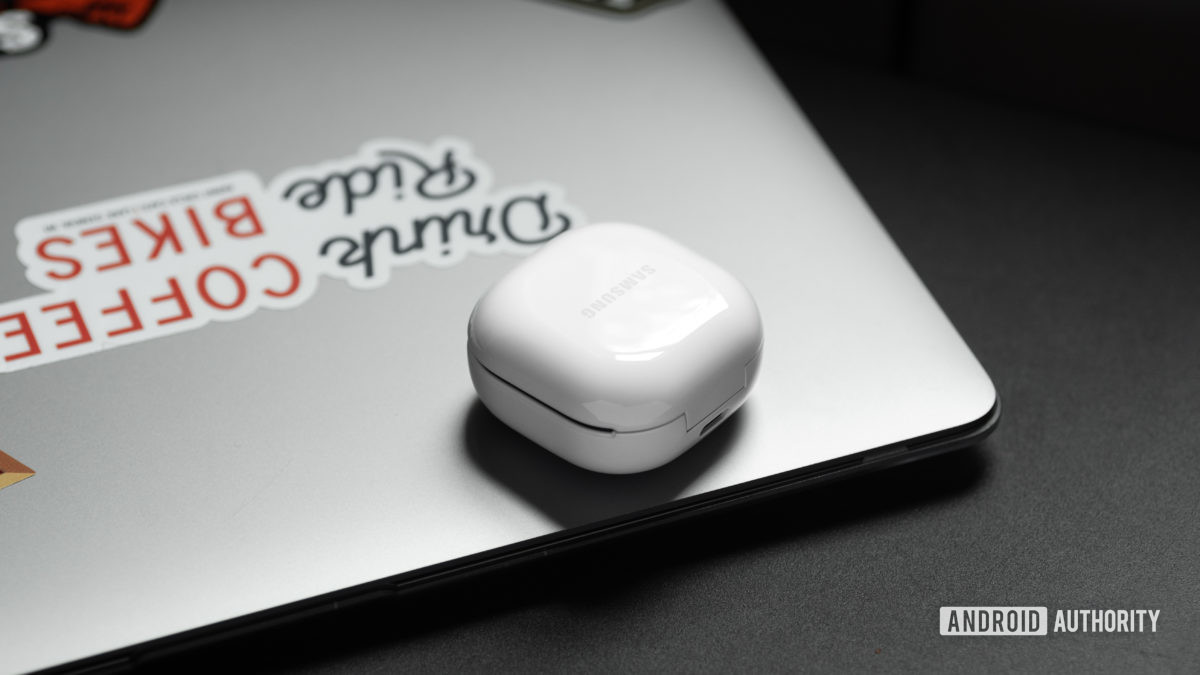
The boxy charging case looks nearly identical to that of the Galaxy Buds Pro and Galaxy Buds Live. Whether you go with the Graphite, White, Olive, or Lavender color variant, the case exterior is white with the interior matching the earbuds. The case looks great, though I wish Samsung had swapped the glossy finish for something a bit grippier. But hey, if you fumble the case, it won’t pop open and eject the earphones. I test dropped the case from hip height (one meter) and the lid stayed shut.
A USB-C input rests on the back of the case with two battery indicator lights that decorate it, one on the outside and one on the inside. The exterior light indicates the case’s remaining battery, while the interior light corresponds to the earbuds’ remaining battery life.
Should you download the Galaxy Wearable app?
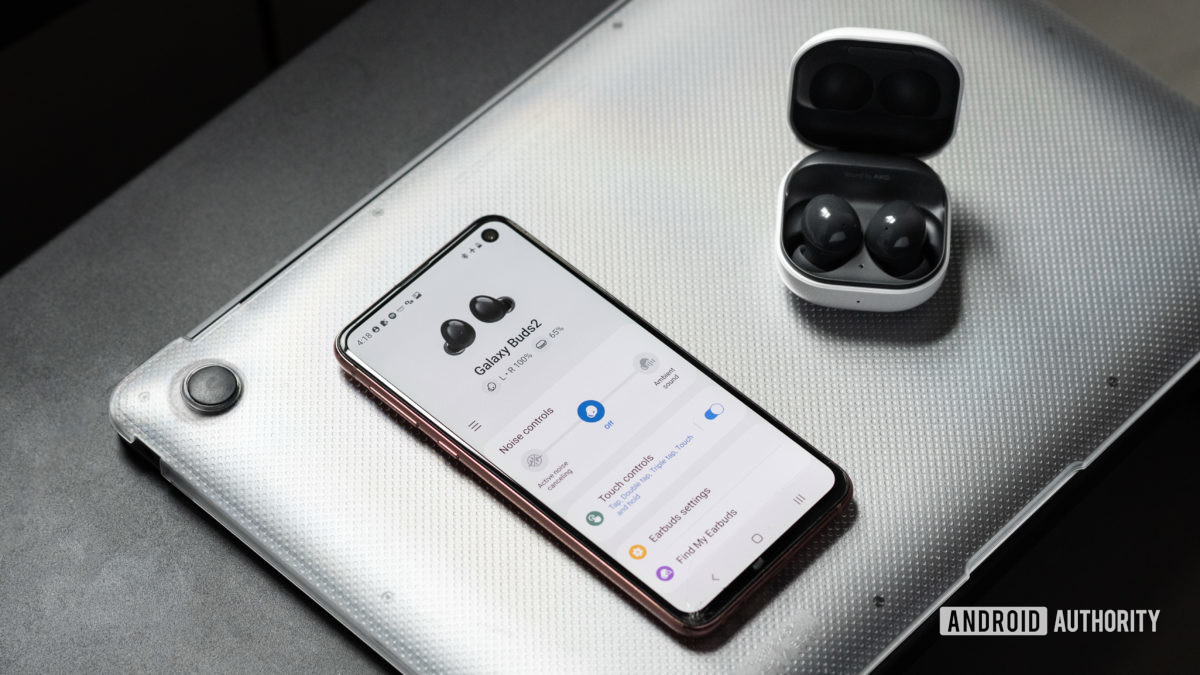
Yes, the Samsung Galaxy Wearable app has plenty of features for the Galaxy Buds 2, but only if you pair them to an Android phone. That’s right, Samsung continues to pull pages from Apple’s playbook: there’s no iOS app support for the Galaxy Buds 2. You can still connect the Buds 2 to an iPhone, the same way you can connect AirPods to Android phones, but you don’t get any software features or access to updates.
You can use the Galaxy Wearable app to toggle noise-cancelling on or off, and to enable or disable ambient sound mode which amplifies background noise through the headset to keep you aware of your surroundings. You can choose between three degrees of ambient sound intensity, and its effect is quite natural relative to other earbuds’ ambient listening modes.
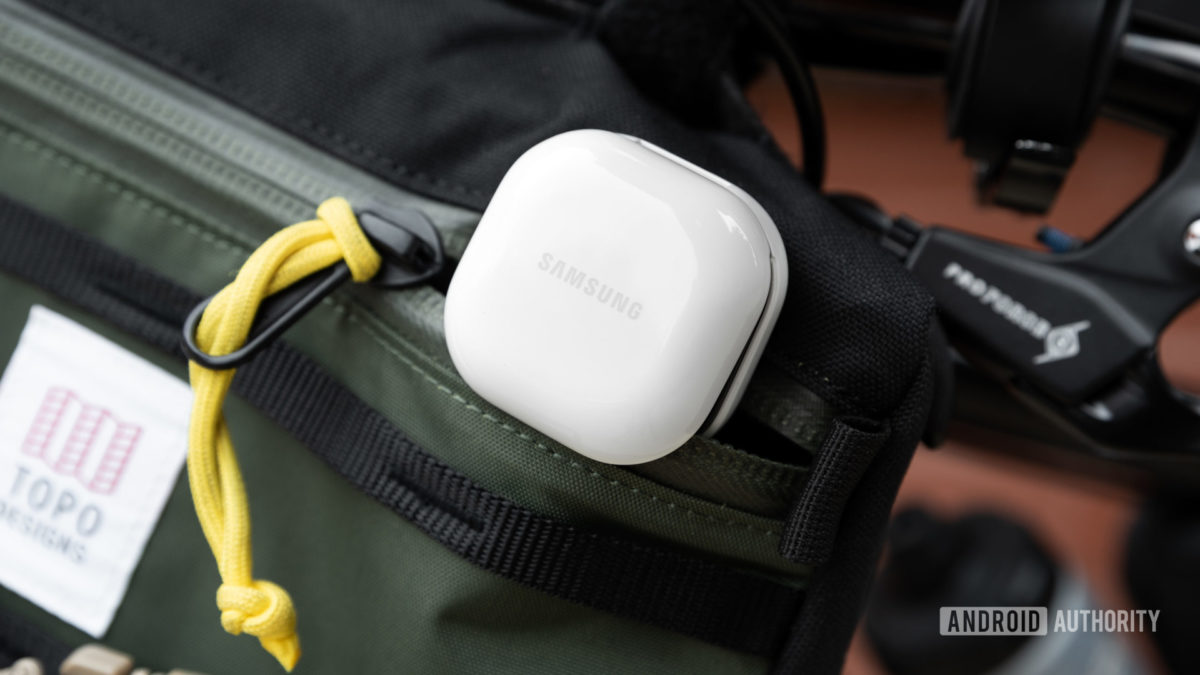
Like the Sony WF-1000XM4, Samsung’s app also has a rudimentary ear tip fit test, giving you immediate feedback with regard to your choice of ear tips. It’s absolutely necessary for you to find a proper pair of ear tips in order to experience optimal noise cancellation. Ear tip fit tests are on the rise as ANC becomes a more common feature in wireless earphones.
The right ear tip fit is essential to experience optimal noise cancellation.
If you dig around a bit, you’ll find Labs where you can enable “gaming mode” to reduce audio-visual latency. Gaming mode isn’t limited to mobile gaming; it happens to be a nice feature for watching any kind of video too. A selection of EQ presets (normal, bass boost, soft, dynamic, clear, treble boost) are available in the app, though you can’t create a custom EQ. Bixby fans can access the virtual assistant with just their voice. You’re not wed to Bixby and can disable it if you’d prefer to tap-and-hold for Google Assistant instead.
While the Buds 2 lack Bluetooth multipoint, you can use seamless earbud connection (fast switching). With this, you can toggle between previously paired mobile devices by tapping on the Galaxy Buds 2 from the desired phone’s Bluetooth menu. This process is much faster than manually disconnecting from the current device before connecting to the designated one. Fast switching works across operating systems. I could easily switch back and forth between an iPhone and Samsung phone.
The only way to access firmware and software updates is by downloading the Galaxy Wearable app. We recommend doing so with the Galaxy Buds 2 as Samsung is fastidious about updating its products, and is known to introduce new features to older earbud modes, extending the life of your purchase.
What features do you get when you use the Buds 2 with the Galaxy Watch 4 Series?
You can also use the Buds Controller on the Galaxy Watch 4 series to quickly control the Buds 2 from your smartwatch. From the watch face, you can toggle between ANC and ambient sound modes with a single tap. You can also use it to enable or disable the earbuds’ touch controls. Buds Controller works with the Galaxy Buds 2, Galaxy Buds Pro, Galaxy Buds Live, and Galaxy Buds Plus.
Is the Galaxy Buds 2 noise-cancelling any good?

According to Samsung, it cuts 110.36Hz sounds by up to 98%, nearly halving the perceived loudness, which is quite good. Bear in mind, Samsung recorded this data in ideal conditions. Anecdotally speaking, the Samsung Galaxy Buds 2 noise-cancelling is fine. The ANC more effectively hushed the predictable rumble of my microwave more than the clicks and clacks of my mechanical keyboard. We’ll leave it up to SoundGuys to put this specification to the test, but the fact of the matter is that the Galaxy Buds 2 will only cancel noise effectively if you get a reliable, proper fit.
The Galaxy Buds 2 are made to go anywhere, and can quiet your daily commute.
While most people will feel at home with one of the three provided ear tip sizes, not everyone will. Since Samsung doesn’t include wing tips with the Buds 2, you may not maintain a secure fit for very long (an issue I had during testing). If you can’t get the ear tips to create a strong seal at the entrance of your ear canals, ANC won’t really work. A physical barrier is required to passively block out high-frequency sounds, hence why the ear tip fit test is so important. Once that requirement is met, then the noise cancellation can focus its effect on predictable, low-frequency sounds.
You might like: The best noise-cancelling true wireless earbuds
How do the Samsung Galaxy Buds 2 sound?
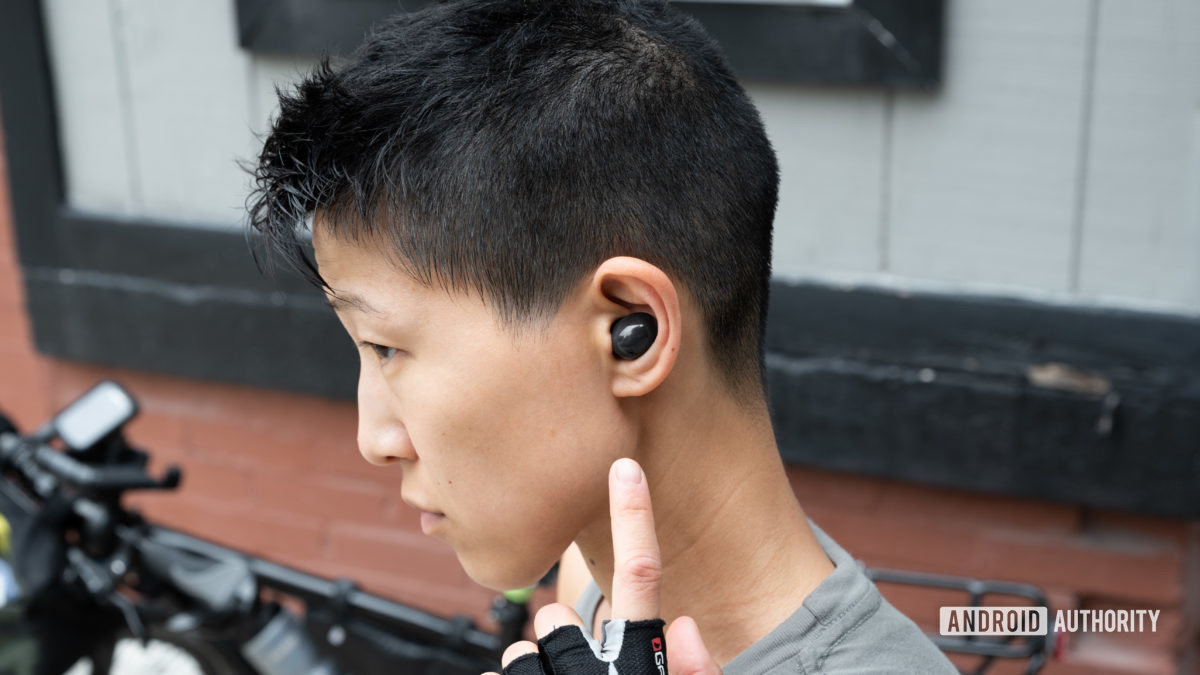
The Samsung Galaxy Buds 2 have a standard consumer-friendly frequency response that mimics that of the Samsung Galaxy Buds Plus and Pro. Bass and treble notes are amplified, which brings out that beloved “oomph” from kick drums without masking detail from high notes like cymbal hits and vocal harmonies. Samsung doesn’t go overboard with the Galaxy Buds 2 tuning, and these earbuds should make nearly all genres of music sound pleasant.
Every now and then, you may notice minor auditory masking as I did in the song Melatonin by Zac Greer. The background guitar strums are difficult to hear during the chorus since the Buds 2 relay the lower-pitched electric guitar strikes with more amplification.
The Buds 2 can make any song sound good.
You can choose from a selection of EQ presets within the Galaxy Wearable app if you don’t like the default sound. While you can’t create a custom EQ from Samsung’s app, most smartphones include an integrated multi-band equalizer. If you’re itching for even more customization, you may want to consider a third-party EQ app.
Do the earbuds stay connected?
The Samsung Galaxy Buds 2 remained connected to my Samsung Galaxy S10e or iPhone 12 Mini anywhere within my 60-square-meter apartment, even with layers of drywall separating the source from the Buds 2. Connection stability was also consistent as the Buds 2 underscored my walks with rock ballads.
You get access to the latest Bluetooth 5.2 firmware and get three Bluetooth codecs to choose from: SBC, AAC, and Samsung Scalable Codec for consistent high-quality audio to iPhones and Samsung devices. While true that all Android handsets support the AAC, its performance is volatile on Android depending on the hardware.
How long does the Buds 2 battery last?
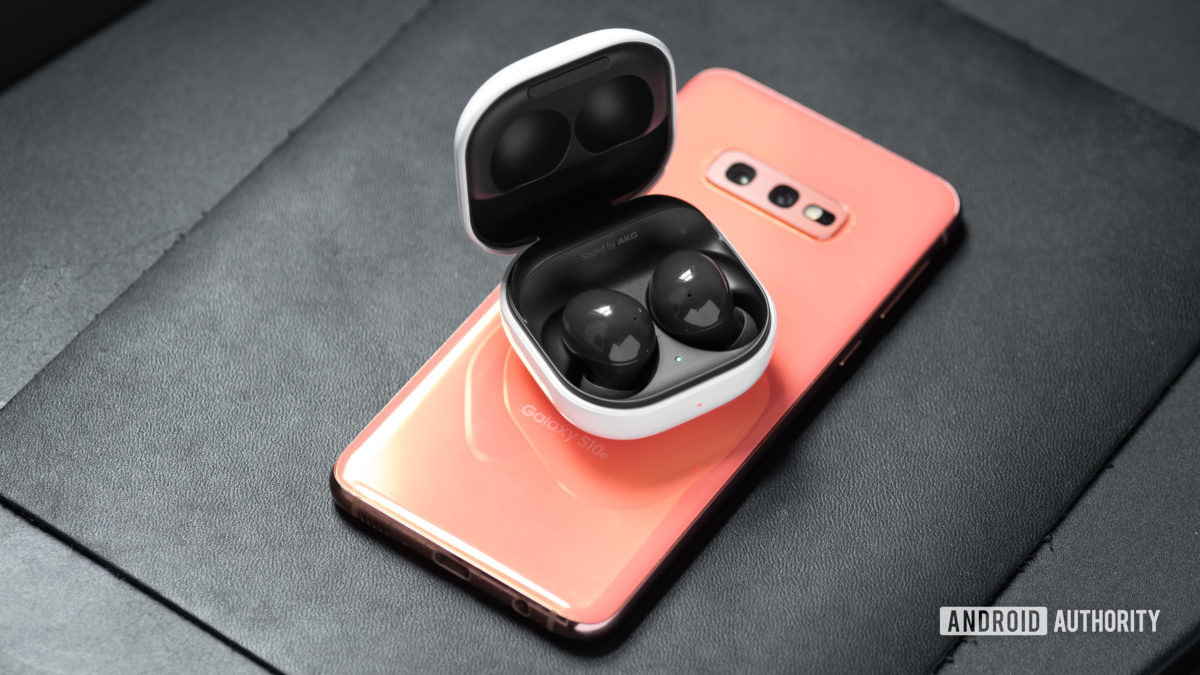
According to Samsung, the Galaxy Buds 2 last five hours with noise-cancelling enabled. You get an additional 15 hours of ANC listening from the charging case. When you place the earbuds in the case for just five minutes, you get 60 minutes of playtime.
Read on: Let’s talk true wireless earbuds and their battery life
Samsung gives you a few options for charging the case. You can take the wired route with the included USB-C cable or place it atop a Qi wireless charging mat. You can even charge the case and earbuds by placing it on top of a Samsung Galaxy device, so long as it supports Wireless PowerShare.
Can you use the Galaxy Buds 2 for phone calls?
The Samsung Galaxy Buds 2 have a triple-microphone array with unimpressive results. In the demo below, my voice comes through as “hollow” or even “muffled,” a consequence of the proximity effect. While this is disappointing, microphone quality is easily improved with a firmware update. Sure, the initial results aren’t stellar, but this shouldn’t be the sole reason you turn away from the Buds 2.
Should you buy the Samsung Galaxy Buds 2?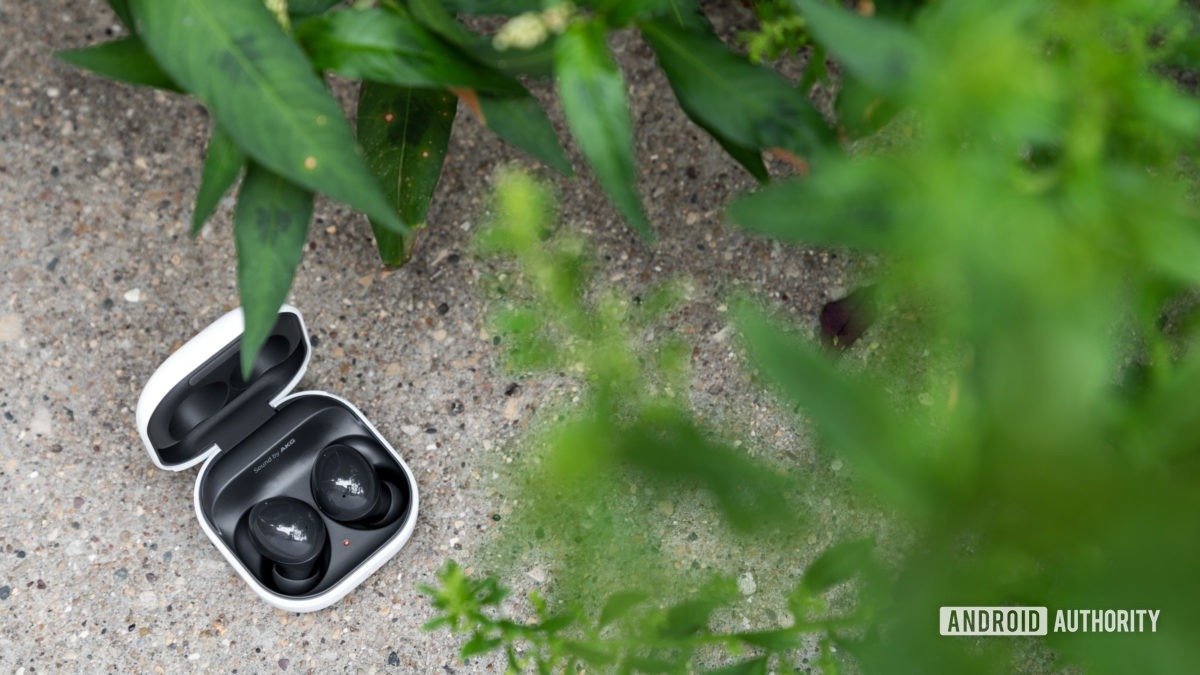 Credit: Lily Katz / Android Authority
Credit: Lily Katz / Android Authority
While the Galaxy Buds 2 aren’t a breakout pair of earbuds, they perform well and it’s exciting to see effective noise-cancelling earphones that fall below the $150 price point. The Samsung Galaxy Buds 2 are available for pre-order and cost $149.99, but it’s hard to justify the Galaxy Buds 2 when the more premium Galaxy Buds Pro often retail for less than $170. The Buds Pro are much more durable, support Samsung 360 Audio, and have very good noise-cancelling. If you don’t want to pre-order the Buds 2, you can wait to purchase them on August 27.
If you don’t care for noise cancellation, consider the Samsung Galaxy Buds Plus instead. While these earphones are a few years old, they’re supremely comfortable. You get direct Spotify access from the touch controls, nearly all the same software features as the Buds 2, and extremely good standalone battery life (well over 11 hours). The best part about the Galaxy Buds Plus: they often go on sale for less than $100.
Small noise-cancelling earbuds for daily use.
What’s the difference between the Plus, Live, Buds 2, and Buds Pro?
Let’s get the universal similarities out of the way when it comes to the Samsung Galaxy Buds: each model supports SBC, AAC, and the Samsung Scalable Codec. All of Samsung’s true wireless earbuds also feature touch controls and a USB-C charging case with fast and wireless charging along with Wireless PowerShare compatibility. IP ratings range from IPX2 to IPX7, and all but the Galaxy Buds Live include ear tips for a sealed fit.
Now for the differences:
The Samsung Galaxy Buds are the original Galaxy earbuds
With the advent of the Buds 2, the original Samsung Galaxy Buds have been discontinued. You can read about these earphones in our Samsung Galaxy Buds review, but all you have to know is they use Bluetooth 5.0, have an IPX2 rating, and provide six hours and 32 minutes of playtime according to SoundGuys’ test results. If you can find a pair of the original Galaxy Buds, you probably won’t pay more than $80 for them.
Samsung Galaxy Buds Plus are the king of comfort
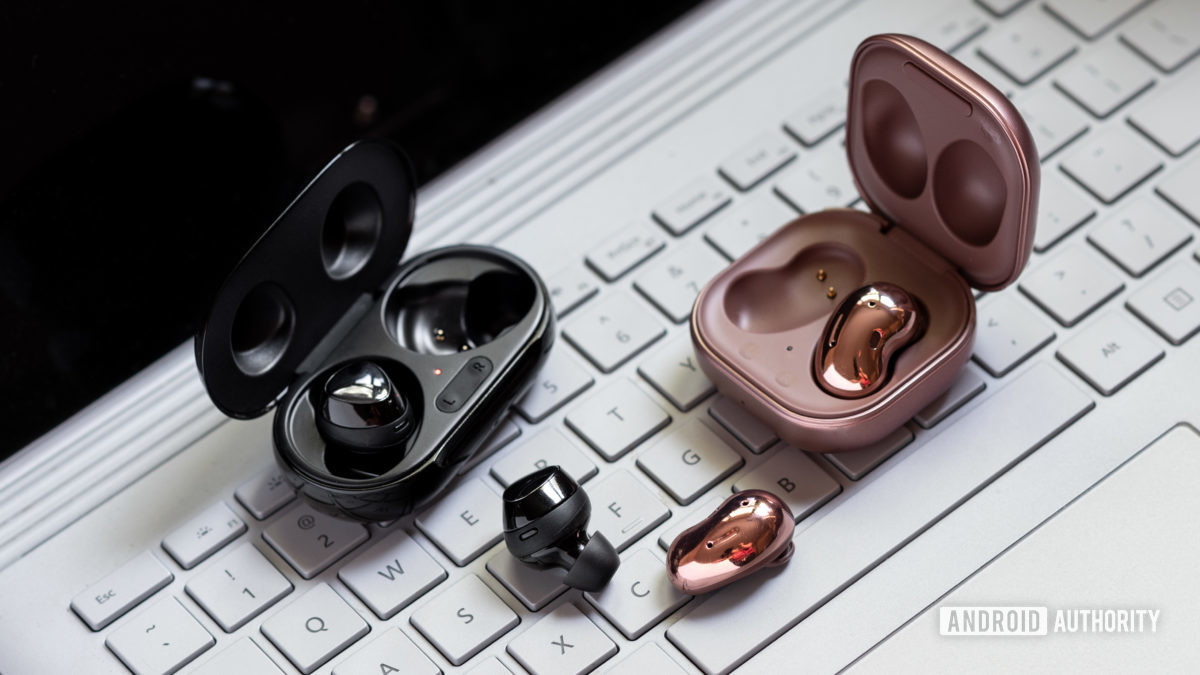
The Samsung Galaxy Buds Plus are still kicking around through both Samsung’s website and other retailers. With a nearly identical appearance to the first-generation Galaxy Buds, you might be tempted to skip over the Buds Plus — don’t. These are arguably the best Samsung Galaxy Buds when it comes to value. The earbuds merit an IPX2 rating, and introduced fast switching and direct Spotify access to the Galaxy Buds line, which were retroactively added to the original Galaxy Buds.
Standalone battery life is impressive at 11 hours and 44 minutes, with the case that provides one reserve charge cycle. Samsung made great improvements to the microphone quality with the Buds Plus over the Galaxy Buds. These earbuds also have wing tips for a more secure fit for any activity.
Samsung Galaxy Buds Live brought a new, open-type fit with ANC
The Galaxy Buds Live are the infamous beans that directly target the Apple AirPods. This is the only open-type fit earphone to date from Samsung and, if the company is smart, the last too. The Buds Live are unique because they have noise-cancelling even though they don’t seal to the ear canal. It’s impressive that it works at all, but if you’re going to pay this much for noise-cancelling earbuds, you might as well buck up for the Buds 2.
You get five hours and 15 minutes of playtime from the Buds Live with ANC on, and these earphones changed the shape of the Galaxy Buds charging cases from a pill shape to a jewelry box.
Samsung Galaxy Buds Pro are Samsung’s flagship noise-cancelling earbuds

Samsung dropped the bean design with the Galaxy Buds Pro and brought back ear tips for a sealed fit. These are great earbuds with an IPX7 rating, and they were the first (and only) Samsung Galaxy Buds to support 360 Audio. You get four hours and 48 minutes of battery life with ANC on. The iOS Galaxy Buds app doesn’t support Galaxy Buds Pro, and you need a Samsung smartphone to take advantage of 360 Audio which is compatible with Netflix, Hulu, Disney Plus, and Apple TV Plus.
What should you get instead of the Galaxy Buds 2?
Beyond the confusing line of Samsung Galaxy Buds, you have an abundance of options. Android smartphone owners who want a smart pair of earbuds should look at the Amazon Echo Buds (2nd gen) ($119). These earphones feature very good active noise-cancelling that gives the more expensive Galaxy Buds Pro a real run for their money. Another option are the Google Pixel Buds (2020) ($179). While these don’t have ANC, they do support high-tech features like Google Translate, direct voice access to the Google Assistant, and auto-pairing on Android.
iPhone owners interested in the Galaxy Buds 2 should instead get the Apple AirPods Pro ($199). Yes, Apple’s earphones cost a bit more, but they often go on promotion for less than $199. You get active noise-cancelling, a better IPX4 rating, and seamless integration with other Apple devices under the same iCloud account. When you use the AirPods Pro with an iOS device, you also get access to Apple Spatial Audio for a more immersive music and video experience.